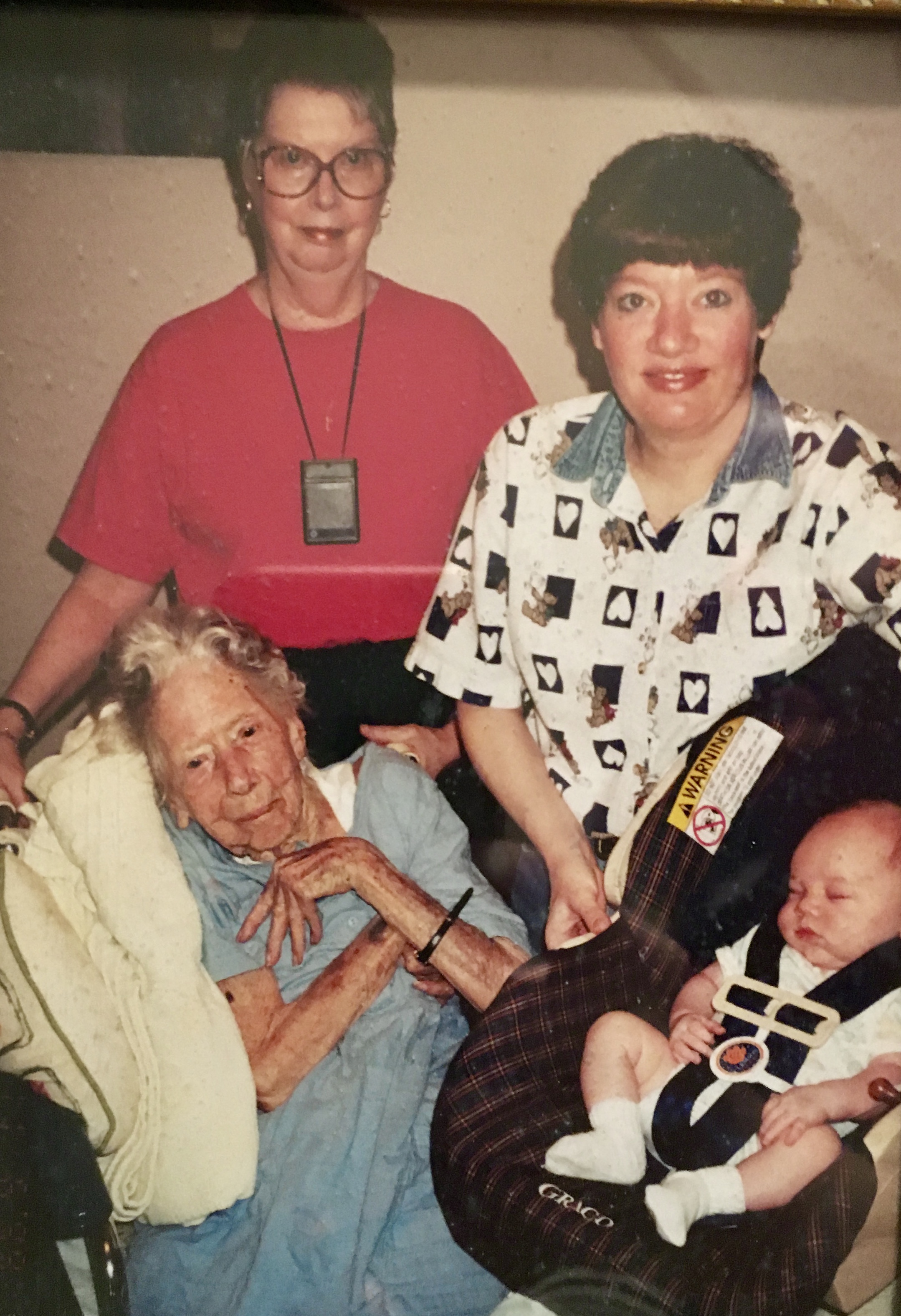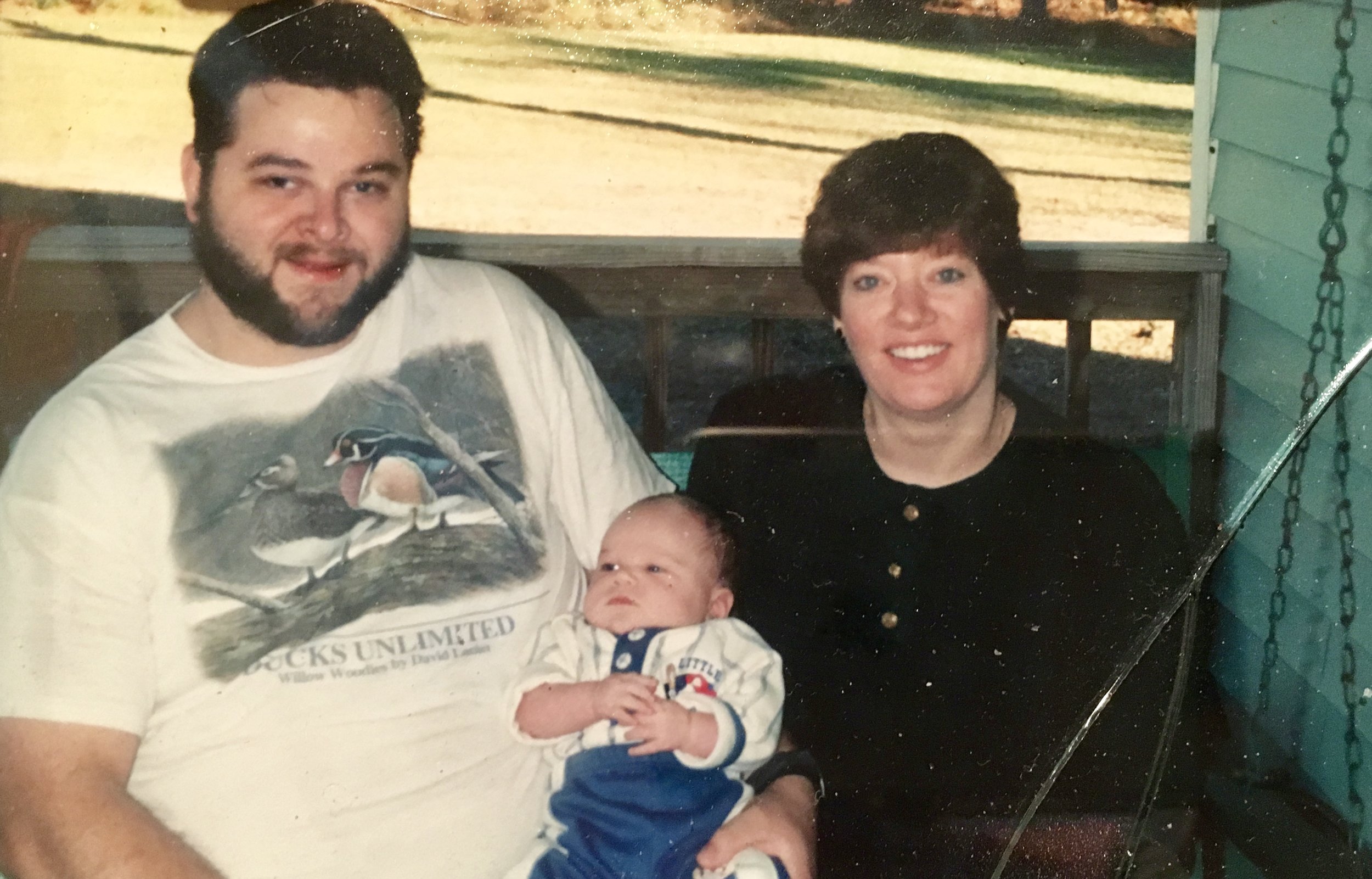The Life and Death of Ruth Rhoden Craven and the Birth of Postpartum Support Charleston
Editor’s Note: This is part two of a four-part series, airing every Friday, that retells the origin of our organization. (Read part one here.) Some of the content may be disturbing, as it is a story of maternal mental illness and suicide. If you find that you need to talk to someone about it, please reach out at contact@ppdsupport.org.
One in every five moms will experience a perinatal mood and anxiety disorder (PMAD), according to 2020 Mom, a national maternal mental health advocacy group. Of that 20 percent of women, only 15 percent will actually receive mental health assistance. Those women who are struggling can present with postpartum depression, anxiety, obsessive-compulsive disorder (OCD), post-traumatic stress disorder (PTSD), psychosis and/or adjustment disorder.
The reasons behind that shocking statistic are many. There is often a lack of communication or understanding about PMADs during OB appointments during and after pregnancy. The social stigma that surrounds mental health can make people uncomfortable. The shame a mom feels when she is struggling can sometimes be unbearable. The intrusive thoughts she may experience will repulse her and cause her to be fearful of reporting them to her family or medical provider. The options that are available to some women may be beyond their income and time capabilities. And she may not have supportive family members who recognize that she’s suffering.
Moms who are struggling with PMADs sometimes feel like there is nowhere to turn. They often flounder in the darkness.
Adjusting to having a newborn is rarely a smooth process, but Ruth Rhoden Craven’s family and friends picked up on troubling behavior right away. Breastfeeding was a struggle, and Ruth’s predisposition for structure and order may have shocked her once she became a mother.
Mary Anna Mullinax’s husband, who had once dated Ruth many years prior, spoke to Ruth on the phone when she was still in the hospital recovering from the birth. “He hung up the phone and he said, ‘Something is wrong,’” Mary Anna said. Ruth told Mary Anna’s husband that breastfeeding was not going well.
One week after Andrew’s birth, on Monday, Sept. 27, 1999, Ruth called her OB to let him know that she may be struggling with postpartum depression. He wrote her a prescription for Zoloft and advised her to call with an update in 30 days. But Ruth was back on the phone with her OB that same week, on Friday, Oct. 1, saying that she was “still depressed.” Both times, she told her OB that she wasn’t experiencing suicidal thoughts. He told Ruth to follow up again in one week to let him know how she was doing.
Ruth and Andrew are pictured with Helena Bradford and Ruth’s grandmother.
At 7:05 p.m. the next day, Saturday, Oct. 2, Ruth’s husband, Joey Craven, rushed her to the same Columbia, S.C., hospital at which she had given birth because she had taken three doses of Tylenol-Codeine to help her sleep. The Cravens’ pastor also joined them that evening. According to the physician’s assessment of her visit, “Patient denies being suicidal or wanting to harm self. Patient’s mother recently left and went back to Mount Pleasant. Patient expresses feeling overwhelmed with responsibility of new baby. Husband supportive/helpful [and] thinks she may need some outpatient counseling.” By 9:30 that evening, she was discharged and taken back home.
Family and friends slowly learned of Ruth’s brief hospitalization and realized that things were not going well. Joey did not want it known that Ruth had taken the pills purposefully, for fear of their son, Andrew, being taken away by the state’s child protective services.
data-animation-override>
“[Ruth] was in this dark corner between a china cabinet and another piece of furniture. I said, ‘Ruth, what are you doing? Are you sitting there hiding from the cats?’ ‘No, ma’am. I’m just hiding.’ And that’s just when I really got terrified.”
Ruth’s outgoing personality had quickly changed to being withdrawn. Helena Bradford, Ruth’s mother, recalled a time when extended family members came to Ruth and Joey’s home in Lexington, S.C., to meet Andrew. “[Ruth] just sat on the couch and smiled and didn’t say a word,” Helena said. “And that was absolutely not her.”
Amid this, Ruth continued to struggle with breastfeeding. Well-meaning friends tried to help Ruth get over the hump of the newborn period, a time when many mothers and babies struggle to make breastfeeding work. A passionate breastfeeding advocate, Elaine Earl recalled calling Ruth several times, trying to help, and an occasion when she and another friend traveled to Lexington to see Ruth.
“[Ruth] was really withdrawn, and I tried to help. However, I can be loud, and I was way too pushy,” said Elaine, who was a co-founder of the Ruth Rhoden Craven Foundation. “I remember showing her how to sit with a pillow on her lap to hold the baby, and she didn’t want to do it, but I think I forced her to do it. She helped Andrew about a minute then gave him to Joey. Joey asked us to leave about five minutes later. I got huffy, saying things like, ‘Ruth doesn’t want us to leave. I want to ask her myself.’ So I pushed my way in to her room, and she said, ‘Yes, please leave.’ I felt horrible and apologized, and we left. That would be the last time I saw her.”
On another occasion, Mary Anna said she and another Charleston friend were also going to drive up to Lexington to visit Ruth, Joey and Andrew. “I remember Joey called us the night before and said, ‘Don’t come.’ And that was not Ruth.”
As Ruth continued to withdraw, Helena pleaded with Ruth to stop breastfeeding. “I finally said, ‘Ruth, give it up. There’s nothing wrong with formula.” Ruth had been producing plenty of breastmilk, but she and Andrew were having trouble figuring it out together. She tried for about two weeks, Helena remembers, and then tried to exclusively pump. That proved to be too stressful as well, and so she decided to use formula.
“I could see, in her perfection, that that might be a failure [for her],” Mary Anna said.
Being overwhelmed continued to haunt Ruth. In the dawn of the Internet age, Ruth communicated with another woman online who was selling baby clothes. Helena said she had asked the woman how she juggled being a mom with all of its responsibilities, like getting all of the bottles washed. Ruth thought that if she couldn’t figure out how to get organized, she was going to lose it.
Five days after Ruth’s first suicide attempt, on Thursday, Oct. 7, Helena called Ruth’s OB. She had traveled to Lexington to be with Ruth again, and Helena told the doctor that Ruth was still very depressed and was now having suicidal thoughts. According to the doctor’s notes, Helena told him that Ruth “wants to go to sleep forever and never wake up.” He advised Ruth to increase her dosage of Zoloft and referred her to a psychiatrist.
Joey, Ruth and Andrew, on one of Ruth’s good days.
Helena lived in fear for her daughter. She was having trouble finding resources on postpartum depression, in medical literature and support online.
“I walked through the dining room to get to the kitchen, and I hated that house because it was dark,” she said. “[Ruth] was in this dark corner between a china cabinet and another piece of furniture. I said, ‘Ruth, what are you doing? Are you sitting there hiding from the cats?’ ‘No, ma’am. I’m just hiding.’ And that’s just when I really got terrified. I said, ‘You must be chilly, sitting there on the floor. Why don’t you go in the den on the sofa and get under some cover?’ So she did that. And that’s when I got online, and I was very, very new to the Internet. And I was trying to find anything I could on postpartum depression. I had no idea how to help her.”
On Sunday, Oct. 10, Joey woke up Helena in a panic, saying “Call 911. Ruth took a bottle of pills!”
Read Part 3 here.


